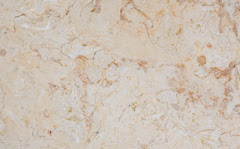For many hundreds of years, an extensive amount of stone have been quarried from all over the world from beds formed millions of years ago. Some types of natural stone are of a higher quality to others, especially when being considered as a material for construction. When it comes to appearance, workability and structural integrity, limestone often is a superior material among architects, builders and owners.
Limestone is sedimentary, composed of calcium carbonate or calcium and magnesium, or a combination of these. With natural characteristics such as, iron spots, fossils and shell formations, calcite streaks or spots, pit holes, open texture streaks, honeycomb formations, and others, limestone can have a varied look and surface finish, lending even more versatility as a construction material.
Produced by millions of years of heat and pressure, limestone varies in hardness and is commonly found in colours including different shades of black, grey, cream and orange. When recrystalized, limestone becomes marble — another natural stone popular with building projects that normally costs more than limestone and is renowned for having a more polished, prestigious finish. But it is limestone that is often selected as an exterior commercial or residential construction material for focal points of grand — and not so grand — structures. Its virtually maintenance-free characteristic is a huge selling point for many builders.
| | . |
| . |
Colouring agents found in some construction materials have a tendency to fade over time, whereas limestone, with no colouring agents and strength enough to be used without reinforcement rods, does not. "Another benefit of real stone such as Limestone is that it weathers naturally and enhances the appearance of the material. In spite of limestone being cost effective and easily sourced, some people choose to purchase instead any number of cheaper, manmade cast products on the market manufactured to mimic limestone.
Limestone does not have a tendency to split and can be processed into a wide range of shapes and sizes. So it can be sawed, planed, turned on a lathe or hand worked to match the requirements of demanding architectural designs, states the NSC's Web site. Limestone has proven its use from simple treads and pavers to landscaping structures and bridges, to extravagant cathedrals many times over.
Visit www.stoneandporcelain.com for our full range of Limesone tiles.







